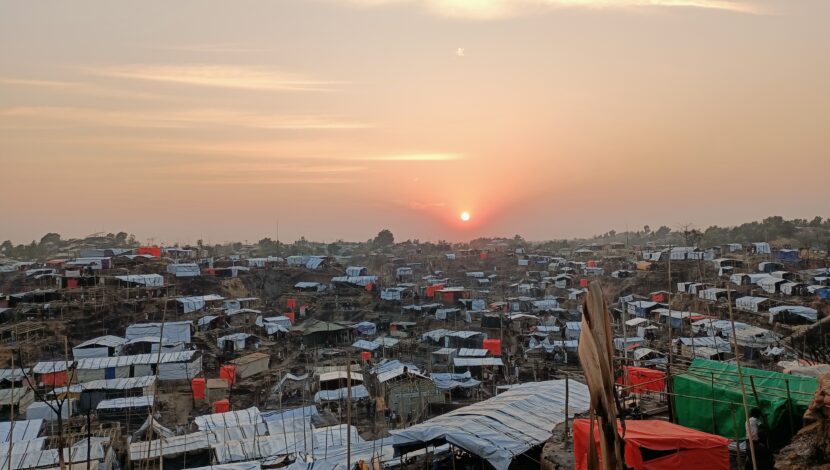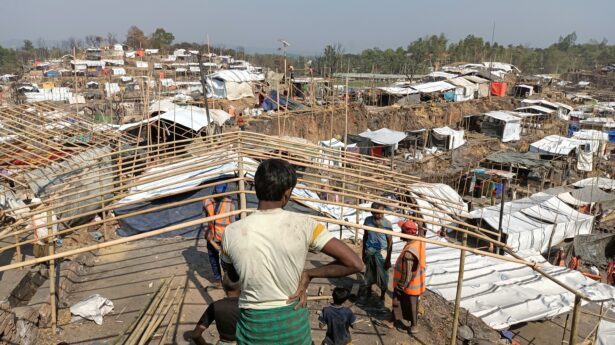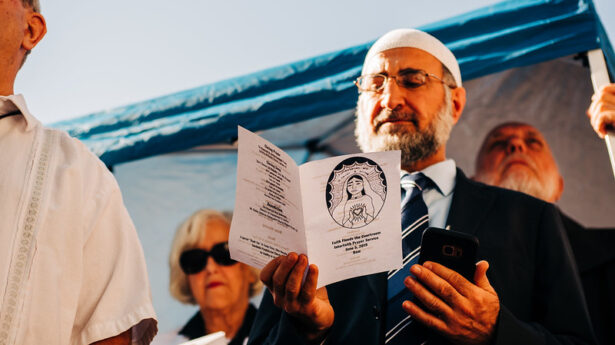The Unitarian Universalist Service Committee advances human rights through grassroots collaborations.
3 Ways the Emancipation Struggle is Ongoing

By Josh Leach on June 19, 2024
Mind if I ask: What device are you using right now to read this blog? A smart phone? A laptop? Either way, your device probably has a lithium ion rechargeable battery in it. And if so, it almost certainly contains at least one key raw material that was mined under conditions amounting to “modern-day slavery.” (For what it’s worth, this is my problem too—I’m using a rechargeable laptop right now to type these words.)
This is just one of several examples of how slavery—and other forms of oppression that deprive people of their freedom—persist today. Even as we celebrate the strides toward collective liberation that the holiday of June 19th commemorates, therefore, we also remind ourselves that the work to end colonialism, structural racism, exploitation, and militarism continues.
What is Juneteenth?
We celebrate June 19 as a federal holiday here in the United States because it marks the formal end of slavery in the American South. On this day in 1865, Black Americans in Texas learned for the first time that the U.S. President signed the Emancipation Proclamation two years earlier. June 19, 1865 therefore marked the effective date of freedom for the last enslaved people living in the Confederacy.
Even on the day it was first decreed, however, this emancipation was incomplete. President Lincoln’s Proclamation was a wartime measure that applied only to the Confederate states that had rebelled against the federal government. As a result, slavery persisted—even after the decree was announced—in border states remaining loyal to the Union. In the latter states, slavery would not officially end until the ratification of the 13th Amendment.
Juneteenth, therefore, has always been about celebrating a freedom that is not yet fully realized. The holiday marks a culminating point in one stage of the Black freedom struggle—but it was hardly the last. Descendants of enslaved people in the United States still had to fight for more than a century to achieve social and political equality, overcoming structural barriers of racism and oppression that persist to the present.
So, on this Juneteenth, we carry this legacy forward. We celebrate the emancipation and collective liberation that has already been achieved—while recognizing that this work is still incomplete. Even the worst forms of oppression and unfreedom—including conditions tantamount to slavery—persist in the world today due to forces of colonialism, greed, and exploitation.
Where does slavery still exist today?
The organization Walk Free estimates that as many as 50 million people still live under a form of slavery today. This vile deprivation of fundamental rights takes many forms and occurs all over the globe. Today, we wish to call attention to three examples that relate especially closely to UUSC’s and our partners’ work in the fields of climate justice, migration justice, and international justice and accountability.
- Extractivism and Climate Injustice in the Democratic Republic of the Congo
One of the key components of most lithium ion batteries today is cobalt—a mineral mined predominantly in the Democratic Republic of the Congo. And while there exists a legal cobalt mining industry in the country, experts say that the supply chain for this resource is inseparably linked to a system of so-called “artisanal” mining that employs people to work by hand for a pittance a day.
Reportedly, many people are left with no choice but to accept work under these conditions, scraping a living by hand, because many of these same mining companies razed their villages to the ground and destroyed their previous livelihoods, in order to make way for lucrative cobalt concessions. Sometimes, armed groups also force them to work under the threat of death.
This is the ugly side of the industrialized world’s green energy transition. The Global North’s greed for raw materials has fueled an illicit economy in forced labor that may only become worse as the world shifts to electric vehicles (which rely on lithium ion batteries). This is why UUSC’s partners say that climate justice has to mean more than just replacing fossil fuels—it requires addressing the injustices associated with “green” energy sources as well.
- Multigenerational enslavement in Mauritania
Slavery also still persists in the Northwest African country of Mauritania, where many Black Mauritanians still face a form of slavery under the country’s entrenched racial caste system. Even though slavery is officially illegal in Mauritania (though this change only occurred as recently as 1981!), it is estimated that as many as 90,000 Black Mauritanians still live under conditions amounting to enslavement.
This brutal system of racial slavery—and the government’s persecution of people who resist it—has forced many Black anti-slavery activists to flee the country. Many have come to the United States in recent years, hoping to find freedom. Yet, all too often, they face still more racism and structural injustice instead. The U.S. government still routinely rejects the asylum claims of Mauritanian refugees and deports people to the country—even though such a policy may literally be returning people to the hands of their enslavers.
- Forced conscription in Burma
Structural racism and oppression also continue to face the Rohingya people of Burma—a majority-Muslim ethnic community living historically in the western Burmese state of Rakhine. For decades, the Burmese military has subjected the Rohingya to apartheid and genocide. And now, the military junta is reportedly forcing Rohingya people to serve in the same armed forces that committed a wholesale massacre against them just seven years ago.
Such forced conscription—which is also facing young people of other ethnic groups throughout Burma—may not look the same as other forms of slavery. But it amounts to a forcible deprivation of people’s fundamental freedoms at the barrel of a gun. And what makes it even worse is that young people are being forced to fight in the same military that is actively working to destroy their democracy.
***
All these forms of oppression are unique, and the history of slavery and forced labor differs around the world. One struggle for freedom cannot easily be analogized to another. But, even amidst this diversity, one thing holds true across the world: The work of emancipation is ongoing. The evils of greed, neocolonialism, exploitation, extraction, and militarism continue to deprive people of their freedoms and their rights. And, as long as they do, the struggle for collective liberation that we celebrate on Juneteenth is unfinished. Unsurprisingly, the three cases listed above are not the only cases of slavery or forced labor that we see globally—nor are they the only ones that have a thread of U.S. complicity woven through their narratives.
UUSC and our partners are working to carry this struggle forward. Sign up to learn more about our partners’ work for climate justice, migration justice, and international justice and accountability. You can also make a donation to sustain our work. Your contribution in any amount helps us backstop our grassroots partners and advance the cause of solidarity and collective liberation around the globe.
Image credit: UUSC (MD Jamal)

